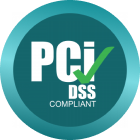Are you an organization looking to have a competitive edge over your competition? Expense analytics, will help you, achieve just that!One of the core aspects of making well-informed and confident decisions is to understand what your numbers say. Analytics, give you insight into the overall performance and health of your organization. This further helps you get the upper hand, as it also gives you insight into the type of spenders, spending trends, policies that require up-gradation and more.Gone are the days where finance folks were required to shuffle through truck-loads of data. Often times, it took months together, to compile, clean and analyze data. Today, you can download, analyze and derive deductions from data in real-time, saving you time and manpower.
Why do businesses need Expense Analytics?
Expense analytics enable businesses to compare expenses with budgets to ensure that they are not overspending or indulging in wasteful expenditure.
Expense analytics reports give finance teams and C-level executives better and real-time visibility into:
- Employee expenses: These reports help you gain insight into where your employees are recording their business travel spends. This could cover expenses such as corporate travel bookings and credit card reconciliations.
- Targeted insights: You can analyze and track spends based on project-specific, vendor-specific and region-specific data.
- Real-time updates: You can get updates on the number of reimbursements and cash advances given out in a particular month or time frame.
- Make informed decisions: Statistics and trends relating to expense reports and policy violations, will help you craft and update policies.
However, not all companies are harnessing the power that comes with T&E analysis. In fact, research shows that 59% of companies still rely on spreadsheets to make expense reports and manually accumulate and consolidate expense data. 51% of these companies state that this method gives them poor visibility into employee spends. To combat these challenges, most successful companies are shifting to expense management solutions.
What are the advantages of using Expense Analytics:
- Increased transparency: Provide approvers, admins and company heads with transparency and clarity into behavioral changes in employees.
- Detailed insights: Companies can benchmark these insights as historical data, to help make well-informed policy and expense-related decisions.
- Enable strategic decisions: Expense analytics empower the finance staff and auditors to make strategic decisions with regards to budget cuts and changes in policies and guidelines.
How to make the best use of Travel and Expense Management Analytics?
Check for fraudulent activities:It is unlikely that with synchronous policy checks one can miss out on fraudulent activities, but it is better to be safe. Drilling down the expense data to an individual level will allow you to view every employee’s expense habits.
Advantages of having data reports:
- Insight into employees who spend frugally vs. ones who don’t
- Statistics on policy violations committed by employees
- The spend vs. return ratios on business trips
What's better?
This way companies can make informed decisions on offering incentives or rewards to strong performers. This will further encourage employees to imbibe smart spending habits and saving tips.Below is a screenshot of an analytical report generated by Fyle.
%20(1).png)
Expense analytics reports also give you a clear view on policy-violation trends. If in case, many employees have violated the same policy, this would indicate the policy needs more clarity. In some cases, you may also consider tweaking it a little.For example, if you notice employees are finding it difficult to stay within the upper limit of $60 on food each day, consider amending the guidelines. In this case, you can set the upper limit at, say, $70. These insights help companies craft policies, by keeping employee satisfaction as one of the variables, thereby making it a win-win for both employers and employees, alike.
Gain vendor insights:
Expense data gives finance teams useful insights on preferred vendor relations. This includes how much money is being paid out to the same company/merchant and how often. If the amount is large and the payments are frequently made, companies can consider negotiating a discount or subsidy with the vendor.Most often, organizations negotiate deals with cab companies or global hotel chains if their employees use their services frequently. This way organizations can cut down on costs and increase their networking connects with preferred suppliers.
Gain categorised spend insights
.png)
Targeted insights on spending trends:
Companies grow stronger as they inculcate good practices from other departments or branches. For this, you can categorize your expense reports department-wise, region-wise or project-wise.Let’s look at region-wise spendings, for instance:It is obvious that costs vary depending on regions. If your company has branches in various cities, be sure to analyze how these departments, spread across cities make spends. Additionally, you can also assess what better-performing departments, do differently. These practices can then be imbibed by other departments, ensuring a seamless process across departments.Similarly, project-wise spend analysis can help companies understand what they did differently in comparison to previous projects they took up. This can further act as historical data for the company when shaping budgets for other projects in the future.
Make strategic HRMS decisions:
Expense analytical reports give companies evidence of behavioral changes in their employees. These behaviors can guide decisions that affect human resource management, as well.For example, if there is a particular expense that employees are claiming every month, say, phone bills or fuel, the HR department can integrate these expenses as a component of the employee’s salary structure. This will not only help optimize the payroll structure but also help employees reduce their tax liabilities.37% of companies who use an automated expense management system have claimed to have a better view of travel and entertainment spends; as compared to when they used the conventional methods for recording and tracking spends.
These key operational metrics help organizations have better control over unnecessary spends, thereby reducing costs. By acquiring powerful statistics through a coherent and interactive expense analysis dashboard, companies can gain maximum benefits from an end-to-end automated expense management software.
Want to see Analytics in action? Start your free trial today!










